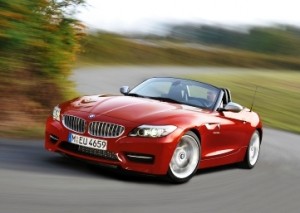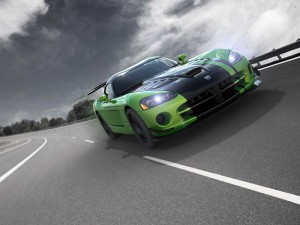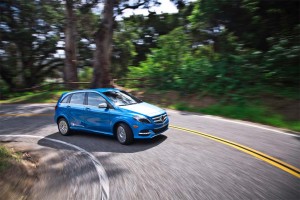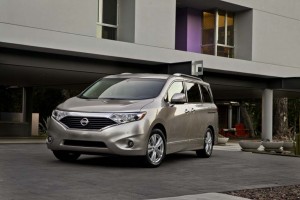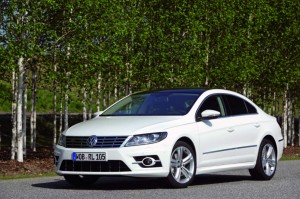
While the ax is largely falling on sedans, coupes and ragtops, a couple light trucks will go away after 2017, including the Volkswagen Touareg SUV.
Every model year brings a flood of new and updated products, but you’ll also see a number of older, typically slower-selling models drive off into the sunset. And that’s certainly going to be the case as we head into 2018.
But the coming model-year seems to be a particular tough one, especially when it comes to passenger cars, which continue to lose momentum to SUVs, pickups and other light trucks. That said, even a few utes will be heading off to the scrapyard in 2018, notably including the Touareg, Volkswagen’s first SUV.
We’ve pulled together a list of 17 models that we know are going to be gone by the end of the current model-year, but while their manufacturers have yet to give official word, several other entries seem likely to vanish, as well, including the little Ford Fiesta and C-Max models. And General Motors is reportedly reviewing six more models that could be culled from its line-up in the near future, very possibly before the end of the 2018 model-year.
Here are 17 products we know for sure won’t be around in 2018:
(Faraday Future lines up new plant, insists it isn’t going away. Click Here for the story.)
BMW Z4. The once-popular little roadster was BMW’s answer to the Miata, but demand has been fading, with Americans buying barely a dozen a month this year. Not exactly a great business case. But fans of two-seaters shouldn’t fret. Word has it that an all-new BMW Z5 is going to arrive relatively soon.
Buick Verano. Like so many other models on this list, the near-luxury Verano has struggled in a market where light trucks make up almost two-thirds of new vehicle sales. Buick has readily adopted to this transition, however, and the Encore has effectively replaced Verano in the line-up.
Chevrolet SS. A full-size sedan for those needing more doors than the Camaro offers, the SS never really generated much in the way of sales – though volume actually was up 21% during the first seven months of 2017. It doesn’t help that GM is shutting down operations in Australia, where the SS is built.
Chrysler 200. Okay, the midsize sedan didn’t even make it all the way through the 2017 model-year, parent Fiat Chrysler Automobiles already transforming its suburban Detroit production plant to build more pickups. In fact, FCA has abandoned all U.S.-made cars, though several still come in from Canada.
Dodge Viper. Originally meant to be a raw and untamed paean to classic sports cars like the Shelby Cobra, the Viper was dropped in 2010, post-Chrysler bankruptcy, returning two years later in much more sophisticated form. But the latest model’s price tag was a reach for buyers and sales were slim.
Hyundai Accent Hatchback. This econocar seemed like a slam-dunk when gas prices were climbing to $4 a gallon, but with prices now holding relatively steady in the $2.00 to $2.50 range, buyers are opting for utes, with a fair number of lower-cost entry models picking up the slack.
Hyundai Azera. Subcompacts have been especially hard hit by the boom in utility-vehicle sales. But so have full-size sedans like the Azera. It also has seen some potential buyers cross over to the more upscale G80 offered by Hyundai’s luxury spin-off, the Genesis brand.
Infiniti QX70. The renamed Infiniti FX was once a standout in the crossover-utility market with its distinctively non-traditional styling. But sales have been sliding, and Nissan’s luxury arm will put the emphasis on the all-new QX50, instead. But some anticipate a new QX70 may be in the works.
Jeep Patriot. In a rather odd move, Jeep decided to offer two variations on the same compact ute theme, building a more classic Compass and a more crossover-styled Patriot. It’s decided to pare that back to one offering. There’s a new 2018 Compass, but the Patriot is being retired this year.
Lexus CT 200h. Toyota’s luxury brand has long offered more hybrids than any other brand, but the CT never seemed to generate much enthusiasm, even when fuel prices were high. And now, at $2? Even a modest 2017 makeover just couldn’t kick start demand for the hatchback hybrid.
Mercedes-Benz B-Class Electric Drive. No shame in admitting you didn’t even know the B-Class was available in the U.S. In fact, it was only offered with an all-electric drivetrain in select markets like California. With a mere 87 miles range it can’t stand up to new, longer-range EVs like the Tesla Model 3.
Mitsubishi i-MiEV. Never mind the quirky name, the ungainly electric vehicle appealed to seemingly only a handful of buyers in the already marginal EV market. A range of just 59 miles per charge certainly didn’t help, even with its pocket change price tag.
Mitsubishi Lancer. Best known in its high-performance EVO trim, the Lancer was an otherwise forgettable compact whose passing few will lament. Even if compact sales weren’t tumbling on the whole, Mitsubishi likely would kill it off as it switches to a more SUV-oriented line-up.
Nissan Quest. Seemingly more locomotive than minivan, Quest was one of the oddest-looking models in the line-up of a brand that has proudly opted to go its own, distinctive route when it comes to styling. While that approach worked for some Nissan offerings, most Quests were being dumped into fleets.
Smart ForTwo (gas model). Little more than a year after introducing a long-delayed makeover of its two-seat city car, this Daimler division dropped the surprise news that it would switch to all-electric power going forward for both the coupe and convertible versions of the ForTwo.
Volkswagen CC. For a brand that has traditionally focused on engineering, the 2009 arrival of the CC was a stylistic breath of fresh air. But coupe has lost momentum of late. And VW has decided to focus solely on the similarly sized Passat sedan.
Volkswagen Touareg. When it arrived in 2004, the oddly named Touareg was VW’s first SUV. But it’s never quite connected with U.S. buyers and the German maker will now focus on the new three-row Atlas, the completely made-over Tiguan, and the old, smaller version of the Tiguan it is holding over.
As noted, we’d be surprised if several other models don’t arrive in 2018 trim, including the Ford Fiesta subcompact and Ford’s C-Max people-mover. The Rio, Kia’s answer to the Hyundai Accent, also appears on the endangered list.
And as many as six GM models could soon be set out to pasture, including the big Chevrolet Impala sedan, subcompact Sonic and Volt plug-in, the midsize Buick LaCrosse, and Cadillac’s CT6 flagship and XTS sedan. Caddy President Johan de Nysschen has also indicated that the ATS and CTS models will be replaced by a single future offering, but that move is still a few years down the road.
(For more on the product cuts in the works at GM, Click Here.)

